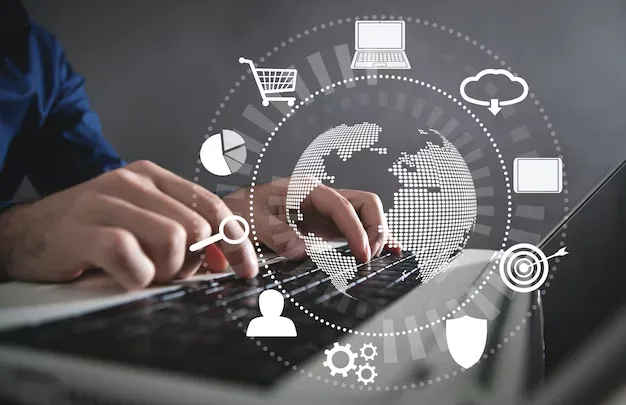Discover Why a 15-Inch Tablet Offers the Perfect Balance Between Laptop Functionality and Portable Device Convenience
The demand for electronic devices has risen significantly in recent years, reflecting rapid advances in technology and the changing needs of consumers. People now seek products that offer both personalisation and practicality, with a strong emphasis on devices that support modern, mobile lifestyles. A 15 inch tablet is an excellent example of this balance, providing a larger display for productivity while maintaining the portability that smaller devices lack. From smartphones and laptops to tablets and wearables, manufacturers are responding by designing products that deliver versatility, accessibility, and adaptability across a wide range of market segments.
Understanding Laptop Functionality
Laptops remain one of the most important tools in the digital age, valued for their ability to combine portability with high levels of functionality. A modern laptop typically features a lightweight build, energy-efficient processors, sharp high-resolution displays, and ample storage capacity. Connectivity is another strong point, with devices offering a variety of ports such as USB and HDMI, alongside built-in Wi-Fi and Bluetooth. Enhanced security measures, including fingerprint recognition and data encryption, provide added protection for users.
The broad range of features makes laptops useful across many different contexts. For students, they are essential for note-taking, research, and access to online learning platforms. In professional environments, they support presentations, virtual meetings, and the flexibility to work remotely. Freelancers often value their portability, enabling them to remain productive in cafés, co-working hubs, or while travelling. Healthcare professionals also make use of laptops for managing patient records efficiently on the move. Creative users, from graphic designers to video editors, rely on laptops for design and multimedia work without being tied to a traditional desktop setup.
Portability and Its Value
Portability has become a defining factor in the technology market. Consumers increasingly favour devices that are lightweight, compact, and easy to transport. This preference reflects the fast-paced nature of contemporary living, where flexibility and convenience are seen as vital. Portable devices provide a seamless connection to work, education, and entertainment, no matter where users are, making them essential for maintaining productivity on the go.
Beyond mobility, portability brings additional advantages. These devices often combine multiple functions in a single compact format, serving as tools for work, communication, and leisure. This multifunctionality reduces the need to own or carry multiple gadgets, saving both money and resources. Portability also supports sustainability by encouraging efficient use of technology. In this way, portable devices not only enhance personal convenience but also contribute to broader trends in efficiency and environmentally conscious living.
Practical Applications of a 15-Inch Tablet
A 15-inch tablet represents a balance between performance and portability, offering a larger display than smaller tablets while remaining more lightweight than most laptops. Its size makes it suitable for a variety of uses across education, work, and leisure.
Education: Tablets have become powerful educational tools. They grant access to online classes, research materials, and interactive applications that aid learning. Their mobility allows students to continue their studies wherever they are, while the larger display of a 15-inch model provides a comfortable reading and viewing experience.
Workspaces: In home offices or business environments, tablets can complement laptops or desktops. They are useful for video conferences, reviewing documents, or managing schedules. Their portability enables employees to remain connected without being restricted to a single workspace, making them valuable in flexible and hybrid work arrangements.
Entertainment: Larger tablets are well-suited for streaming films, reading e-books, or playing games. They offer a more immersive experience than smaller devices while still being easy to carry. This makes them ideal for individuals who want both convenience and quality in their entertainment options.
When comparing tablets and laptops, it is clear that their strengths differ. Tablets are often chosen for casual browsing, streaming, and light productivity tasks due to their touch-screen interfaces and portability. Laptops, by contrast, are better suited for complex tasks such as software development, design work, or detailed document editing thanks to their superior processing power and keyboard functionality. The choice ultimately depends on whether the user prioritises mobility or performance.
Potential Drawbacks of a 15-Inch Tablet
Despite their advantages, 15-inch tablets also come with limitations. They may not handle intensive workloads such as advanced design programmes, heavy multitasking, or extended typing sessions as effectively as laptops. This can restrict their usefulness for certain professionals.
Cost-effectiveness is another consideration. Large tablets can be expensive, and some users may question whether the investment is justified when laptops often provide greater capability at a similar price. For businesses, it is important to evaluate how well such a device aligns with practical requirements before adopting it widely.
These drawbacks, however, can often be addressed with practical solutions. Pairing a tablet with an external keyboard, stylus, or cloud-based software can expand its functionality and help overcome its limitations. By understanding both the strengths and weaknesses of the device, users can ensure they make the most of their investment.
FAQs
What are the main advantages of a 15-inch tablet compared with smaller models?
A 15-inch tablet offers a larger display, which improves viewing comfort for studying, streaming, or creative tasks. It strikes a balance between portability and performance, providing more screen space while remaining easier to carry than most laptops.
How do laptops and tablets differ in everyday use?
Laptops are generally better suited for demanding tasks such as programming, complex design projects, and extended typing due to their processing power and full keyboards. Tablets, meanwhile, are favoured for portability, casual browsing, reading, and multimedia use.
Are large tablets a cost-effective alternative to laptops?
This depends on individual needs. For users who prioritise portability and light productivity, a large tablet may be worthwhile. However, for those requiring high performance and extensive multitasking, a laptop often delivers better value for money.





